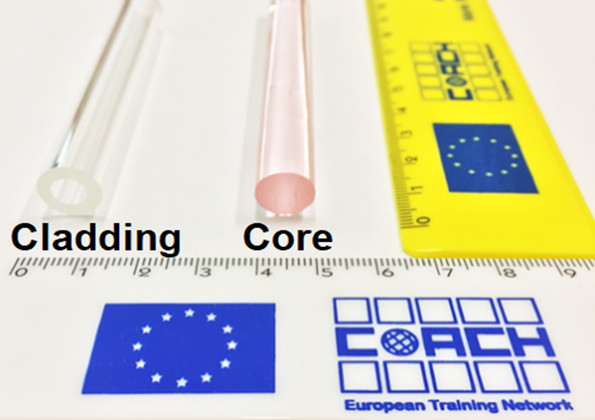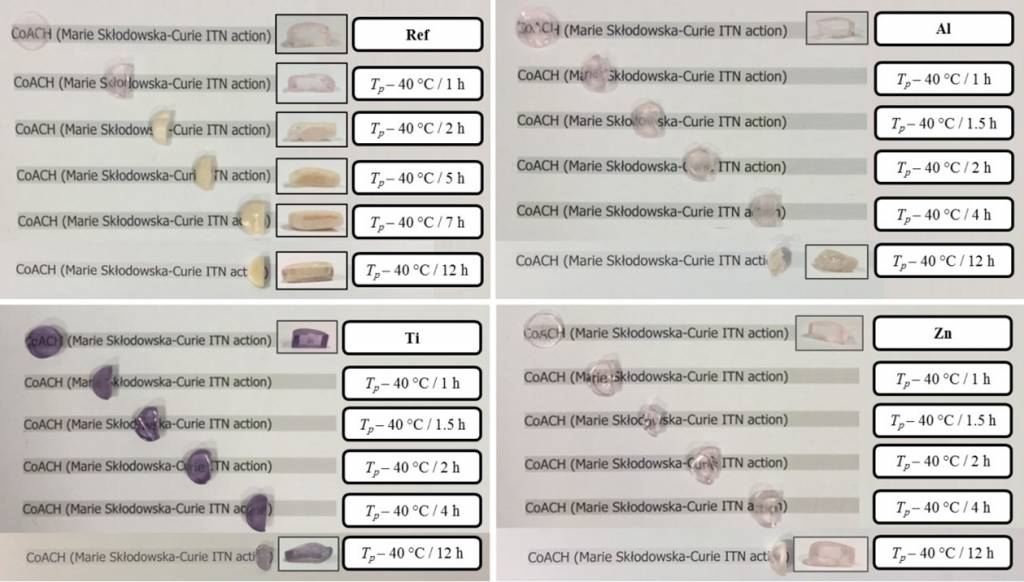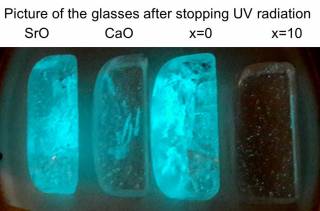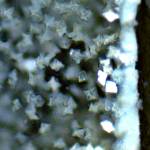The main interest of our group is development of rare-earth elements codoped glasses which could find application as optical fibers, waveguide lasers, optical amplifiers, multicolor displayers, solid state lasers, mid-infrared lasers, Q-switched devices and active glass-ceramic (GC). Keeping an eye on the front-edge of the optical media development, we use the latest scientific achievements and methods to improve and design new perspective materials for photonics.
Our group has an extensive interest in development of new glass-ceramics using different techniques such as devitrification and the direct doping techniques to control the site of REE in the host and to improve the spectroscopic properties of the lasing material.
Among with fundamental scientific research, we try to test new materials for real applications, e.g. demonstrating the feasibility of drawing fibers, depositing thin films or bio-applications using newly engineered glasses.
Here you can find some examples of the research projects led in our group.
Phosphate glasses
Glass is a very attractive material, which has found plenty applications in many aspects of everyday life. Due to their excellent optical properties, glasses are actively used in photonics and laser applications. In comparison to crystalline materials, these materials can vary significantly in chemical composition and can be produced in almost any shape and size. Silicate glasses are very attractive host materials for optical applications especially due to their wide optical transparency window and high mechanical strength. However, REE tend to cluster in silicate glasses. Phosphate glasses have demostrated excellent optical properties as well as high REE solubility, taking into account their low temperature processing ability. Therefore, phosphate glasses can be alternatives to silicate media.

Glass-ceramics
Rare-earth elements, commonly used as dopants in active optical media, usually possess better characteristics in crystal hosts than in glasses. The flexibility of glass materials and performance crystalline can be combined if one can get a glass-ceramic host where rare-earth ions enter the crystalline phase. There are several approaches to reach this.
Glass crystallization is a traditional way of producing glass-ceramics materials. To enchance the performance of the final glass-ceramic material, it is neccesary to carefully control the crystallization process.
We have an extensive experience in investigating the crystallization process of glass materials in order to control the size and the phase of the precipitated crytalline phases as well as their influence on the final optical properties of the medium.

However, not all glasses exhibit bulk precipitation of REE doped crystals. To overcome this limitation, the direct doping method has been developed.
Direct doping
In the direct doping technique, REE-doped nanoparticles are formed separately from the mother glass, e.g. by solution chemistry, and are added in the glass after the melting. This allows to prepare glass-ceramics with various combination of the host glass and active crystals in the volume, having novel optical properties, which are impossible to achive using traditional crystallization approach.


